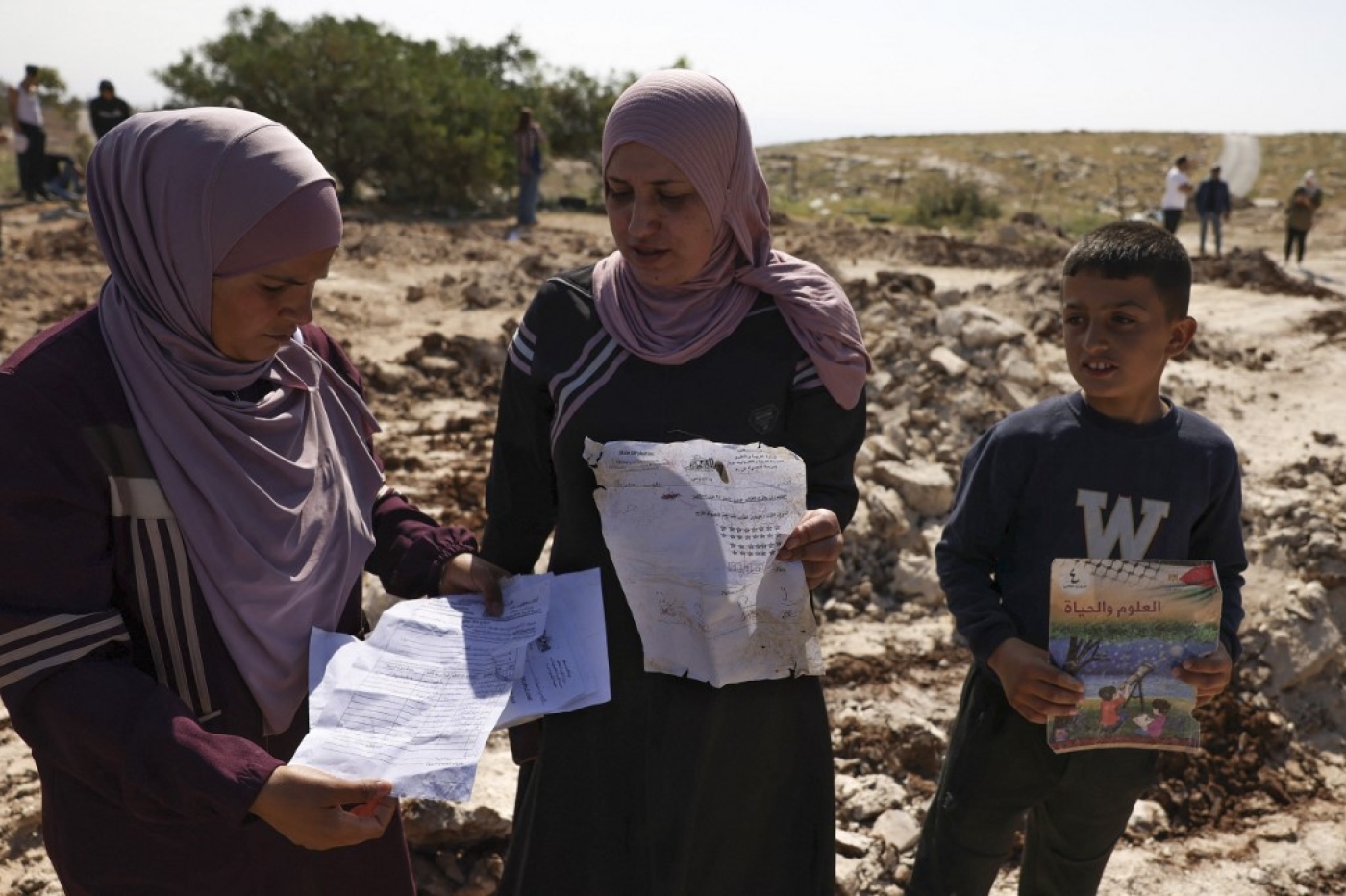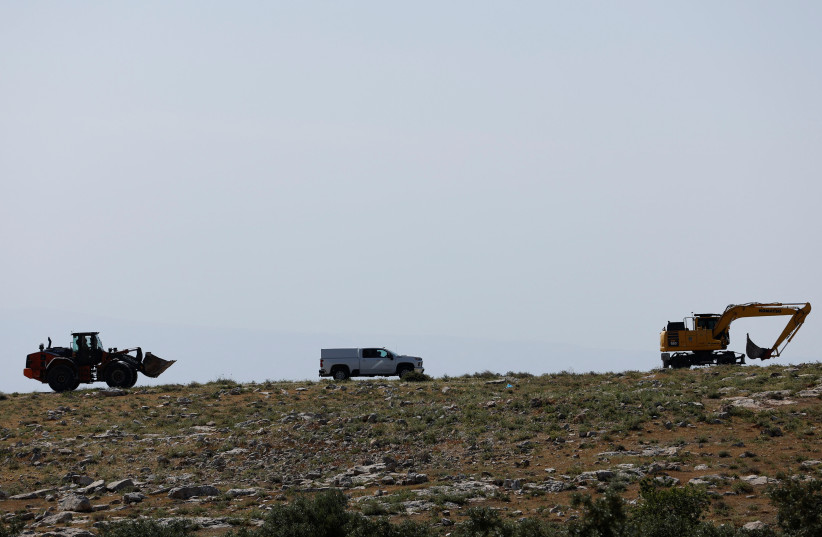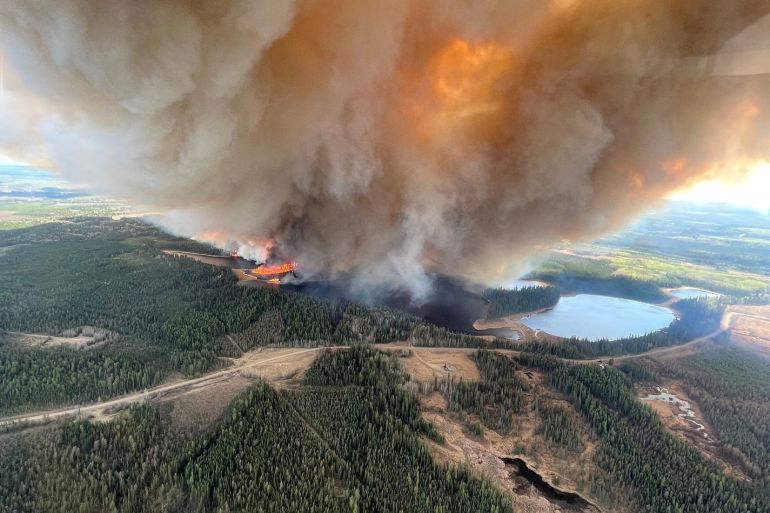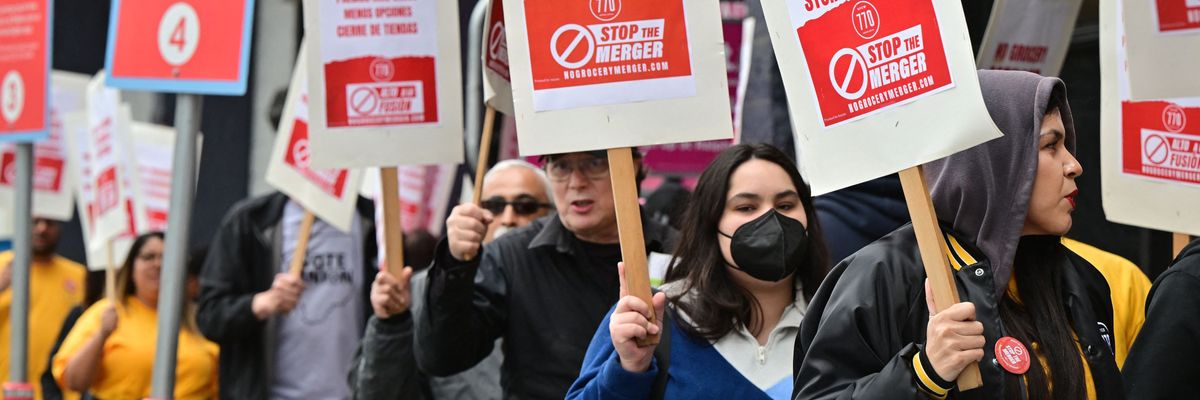Israeli Forces Demolish Palestinian School, Hours Later It Is Rebuilt

Shortly after the Israeli occupation forces demolished an EU-funded school in Bayt Ta’mar, located east of Bethlehem in the West Bank, Palestinian citizens and activists were ready to reconstruct it.
The school was demolished by the Israeli military on Tuesday, leading to outrage from the local community and international human rights groups, including the EU.
Despite the destruction, within hours of the demolition the local community had already begun mobilizing to rebuild the school.
This is the same facility that was reconstructed six years ago after being taken down by the Israeli occupation in 2017.
Residents and activists from the Colonization and Wall Resistance Commission, based in Palestine, reconstructed the school where about sixty children from first to fourth grade are attending.
EU said it was 'appalled' by demolition of school it funded, saying such actions were illegal under international law and that 'children's right to education must be respected'

Palestinians pick up papers and books from the site of a school demolished by Israeli authorities in Jabbet al-Dhib, east of Bethlehem in the occupied West Bank, 7 May 2023 (AFP)
Published date: 7 May 2023
Israeli forces on Sunday demolished a Palestinian primary school in the occupied West Bank, citing safety issues and drawing sharp criticism from the European Union which had funded the project.
Palestinians hurled rocks at Israeli forces who fired tear gas at them as bulldozers moved in on the site at Jabbet al-Dhib village near Bethlehem.
The EU said it was "appalled" after Israeli forces arrived at dawn at the school site, which a Palestinian Authority official said served 45 students and consisted of five classrooms.
Israel has occupied the West Bank since the 1967 Six-Day War. The territory is home to around 2.9 million Palestinians. Around 475,000 Jewish settlers also live there in state-approved settlements considered illegal under international law.
A trailer and classrooms constructed of tin sheeting were cleared out of their contents before the demolition, an AFP correspondent said.
COGAT, the Israeli defence ministry body overseeing civilian affairs in the occupied territories, imposed in March a two-month deadline to vacate the premises following an order by a Jerusalem court.
The body had determined that the school had been "built illegally" and posed a "safety hazard".
'Illegal under international law'
Ahmed Naser, a Palestinian education ministry official, said the school had replaced another demolished by Israel in 2019.
Naser noted its remote location, which he said prevents the "displacement and forced eviction" of local Palestinians, charging that Israel "wants to confiscate these lands".
The EU called on Israel to "halt all demolitions and evictions, which will only increase the suffering of the Palestinian population and further escalate an already tense environment".
"Demolitions are illegal under international law, and children's right to education must be respected," the office of the EU representative to the Palestinian Territories said in a statement.
In January, a group of United Nations experts had called for action to stop Israel's "systematic and deliberate" demolition of Palestinian structures.
"Direct attacks on the Palestinian people's homes, schools, livelihoods and water sources are nothing but Israel's attempts to curtail the Palestinians' right to self-determination and to threaten their very existence," the experts said in a statement.
Mubarak Zawahrah, head of the Beit Tamar local council where the school was located, told AFP Israeli authorities had agreed a stay on the demolition pending a court appeal on Wednesday.
"But the Israeli army ignored that and just demolished it," he said.
Naser, the education ministry official, said a tent would be erected on Monday on the site with basic infrastructure to replace the demolished structures.
COGAT said in a statement that the building had been constructed illegally and 'was found to be dangerous to the safety of anyone studying or otherwise visiting there.'
Published: MAY 7, 2023

Israeli troops take position during clashes between Palestinians and Israeli troops after Israeli machinery demolish a school near Bethlehem in the West Bank May 7, 2023
(photo credit: REUTERS/MUSSA QAWASMA
The European Union condemned on Sunday the IDF demolition of an illegal Palestinian school built with its financial assistance in the Gush Etzion region of the West Bank.
“The EU has been following closely this case and has asked the Israeli authorities not to carry out the demolition which directly affects 81 children and their education,” said EU external affairs spokesperson Peter Stano.
Such “demolitions are illegal under international law and children’s right to education must be respected,” he added.
"[Such] demolitions are illegal under international law and children’s right to education must be respected"EU external affairs spokesperson Peter Stano
The small narrow one-story school located in the Palestinian village of Jubbet Adh Dib, adjacent to the Herodium National Park was also demolished in 2017 but was then rebuilt.
Israel NGOs squabble over illegal Palestinian school
The right-wing group Regavim had petitioned the Jerusalem District Court in 2021 against the school. The court ruled that the structure must be razed in early May.

The left-wing group Peace Now said the village itself lacks “basic infrastructure, from electricity connections to public buildings.”
The Civil Administration has in the past rejected the village’s development plans, forcing residents to build without building permits and find alternative sources of electricity, Peace Now explained.
The Office of the Coordinator of Government Activities in the Territories(the building's owner had refused several attempts by Israeli authorities to engage in dialog over the status of the structure before the enforcement of the demolition.
Students and witnesses said the building had been brought to rubble with no trace of the school that once stood there.
"We got ready to come to school and when we arrived we didn't find the school," student Mohammed Ibrahim told Reuters. "We want a school today! We want to study, if they (the IDF) will keep demolishing, we will keep building."
Witnesses also said the contents of the building had been confiscated.
"They demolished the school and they took everything with them," a nearby resident and witness whose grandson was a student at the school Ismael Salah told Reuters. "All the furniture, they put them in trucks and took them."
Israel has often cited a lack of building permits, which Palestinians and rights groups say are nearly impossible to obtain, in destroying Palestinian structures in the West Bank. The EU in the last two decades has funded the construction of such structures as a humanitarian step to help provides Palestinians with housing in the light of the absence of building permits.
It’s a move that has created tension between Brussels and Jerusalem. Stano said that such demolitions “are illegal under international law, and children’s right to education must be respected.” He called on Israel “to halt all demolitions and evictions, which will only increase the suffering of the Palestinian population and risk enflaming tensions on the ground.”

Last year, Stano said, Israel demolished or seized 954 Palestinian structures, both in the West Bank and in east Jerusalem, noting it was the “highest number recorded since 2016.”
The EU’s Representative Office in Jerusalem said it was “appalled” by the demolition explaining that it further escalated an “already tense environment.
Regavim has argued that such construction is part of a Palestinian Authority plan to seize control of Area C to ensure it is included within their state’s future borders.
Reuters contributed to this report.









